Chef Set Knife, Chef knife, Damascus steel chef knife
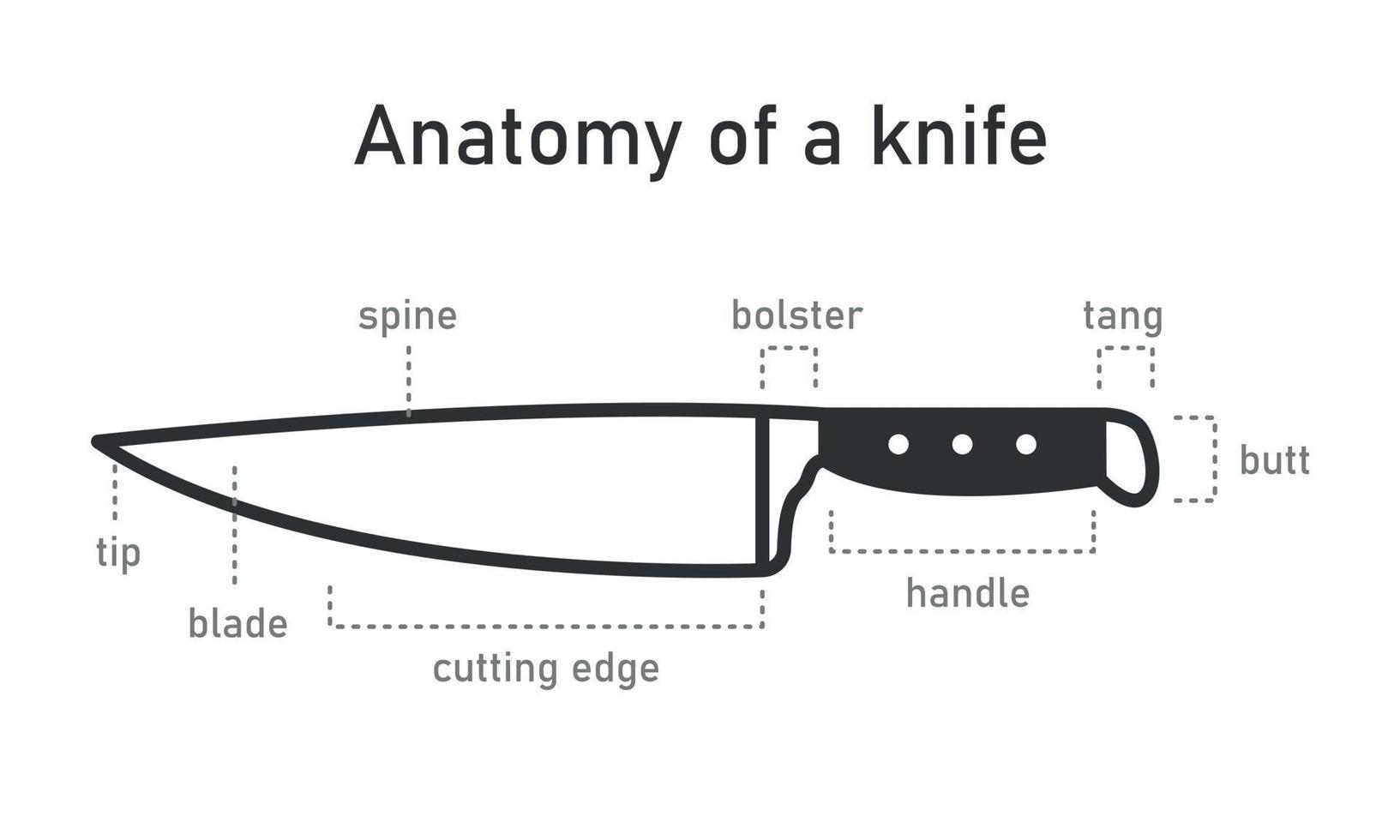
The Anatomy of Chef Knife. Tool for cooking, hunting, military. Kitchen
The forward part of a knife that includes the knife point. Cooks use the tip for detailed work such as paring, trimming, and peeling. The edge located along the bottom of a knife blade between the tip and the heel. Use it for slicing, carving, and making precision cuts. The widest and thickest part of a knife blade.
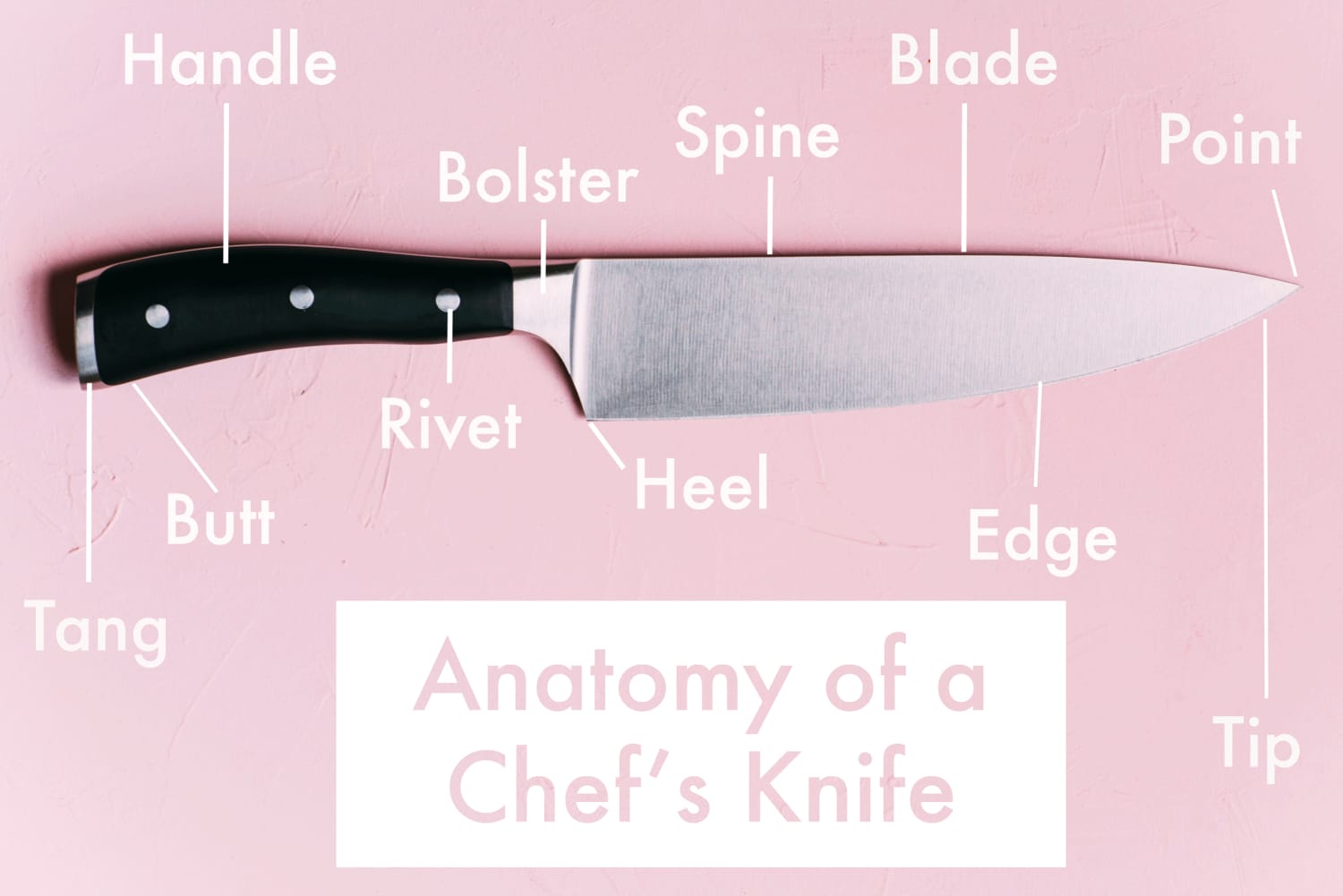
Anatomy of a Chefs Knife What Each Part Is Called Kitchn
It is defined by the blunt, rough part of the knife and it is slightly thicker than the edge of the knife. 5. The Edge or Belly. The edge is very important part of a knife as it is used for cutting and chopping and all the other tasks. The edge should be sharp and well-designed to make a clean and swift cut.
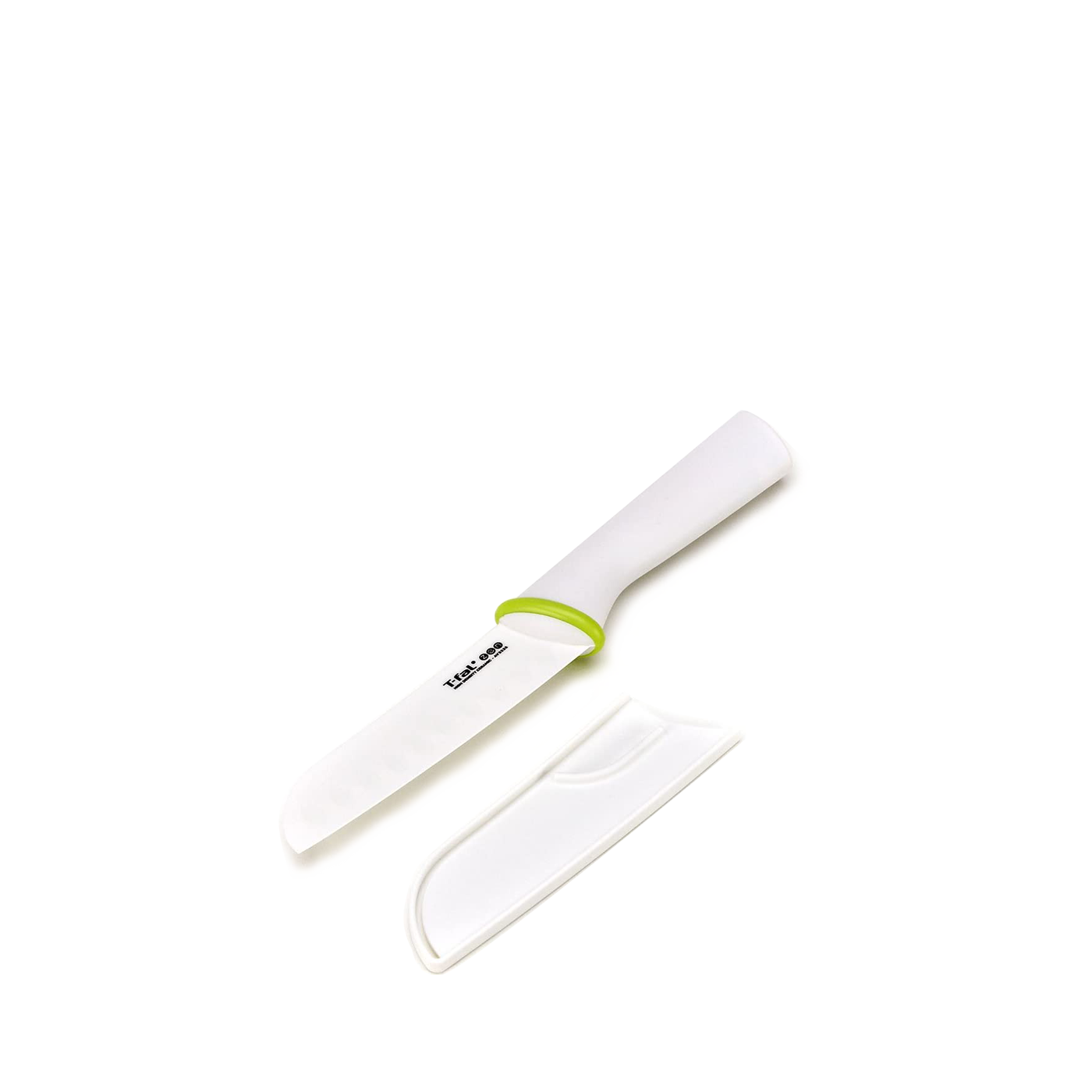
Ceramic Chef Knife Firgos Curaçao
A chef's knife. In cooking, a chef's knife, also known as a cook's knife, is a cutting tool used in food preparation. The chef's knife was originally designed primarily to slice and disjoint large cuts of beef. Today it is the primary general-utility knife for most Western cooks. A chef's knife generally has a blade eight inches (20 centimeters.
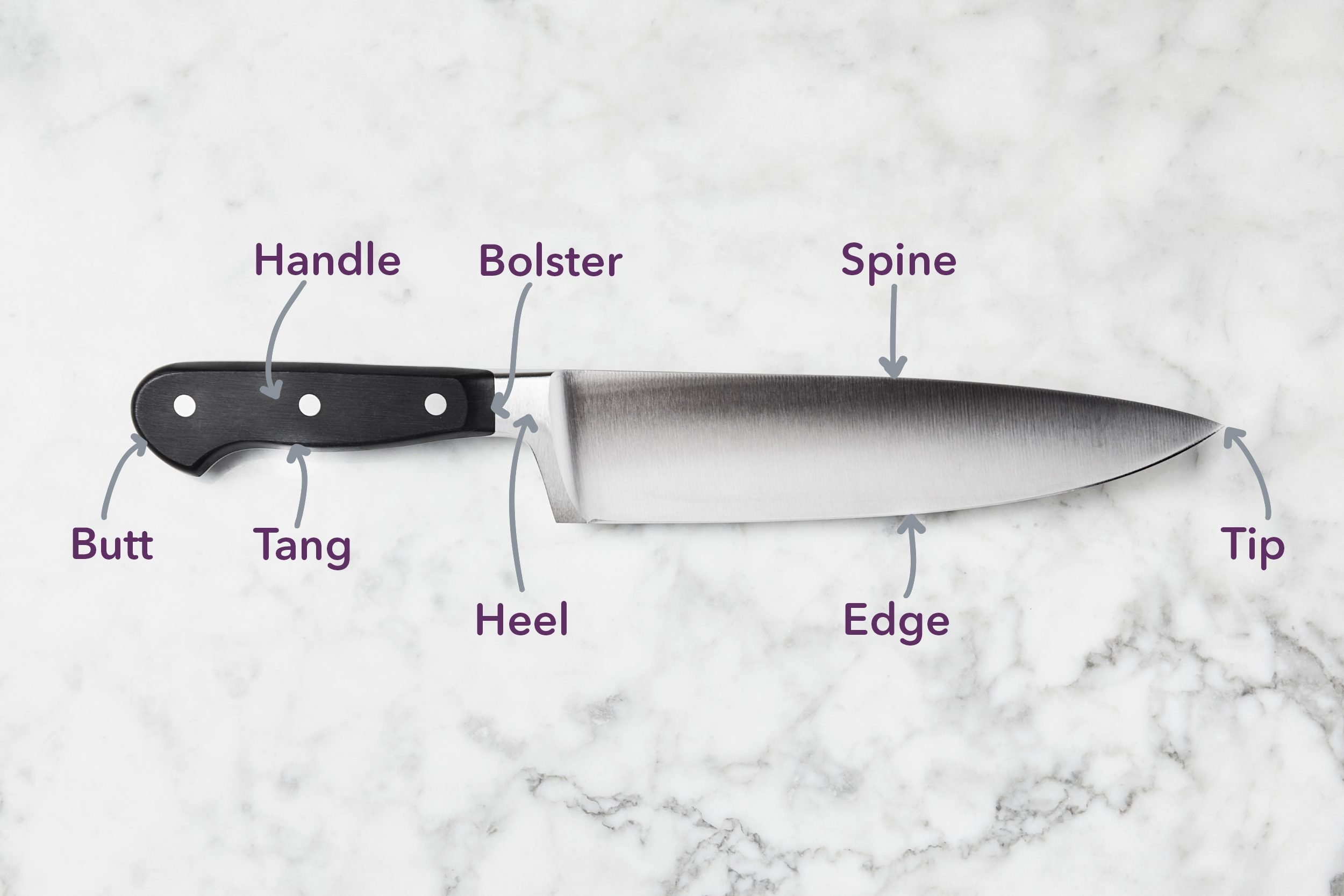
Learn How to Hold a Knife the Right Way Taste of Home
HOW TO HOLD YOUR KNIFE LIKE A PRO: Simple as a chef's knife might seem, where and how you hold the knife will determine your level of control. To maximize control, "choke up" on the knife. Bring your hand up the handle of the knife so that your thumb and forefinger straddle the bolster (that thick piece of metal where the end of the handle.
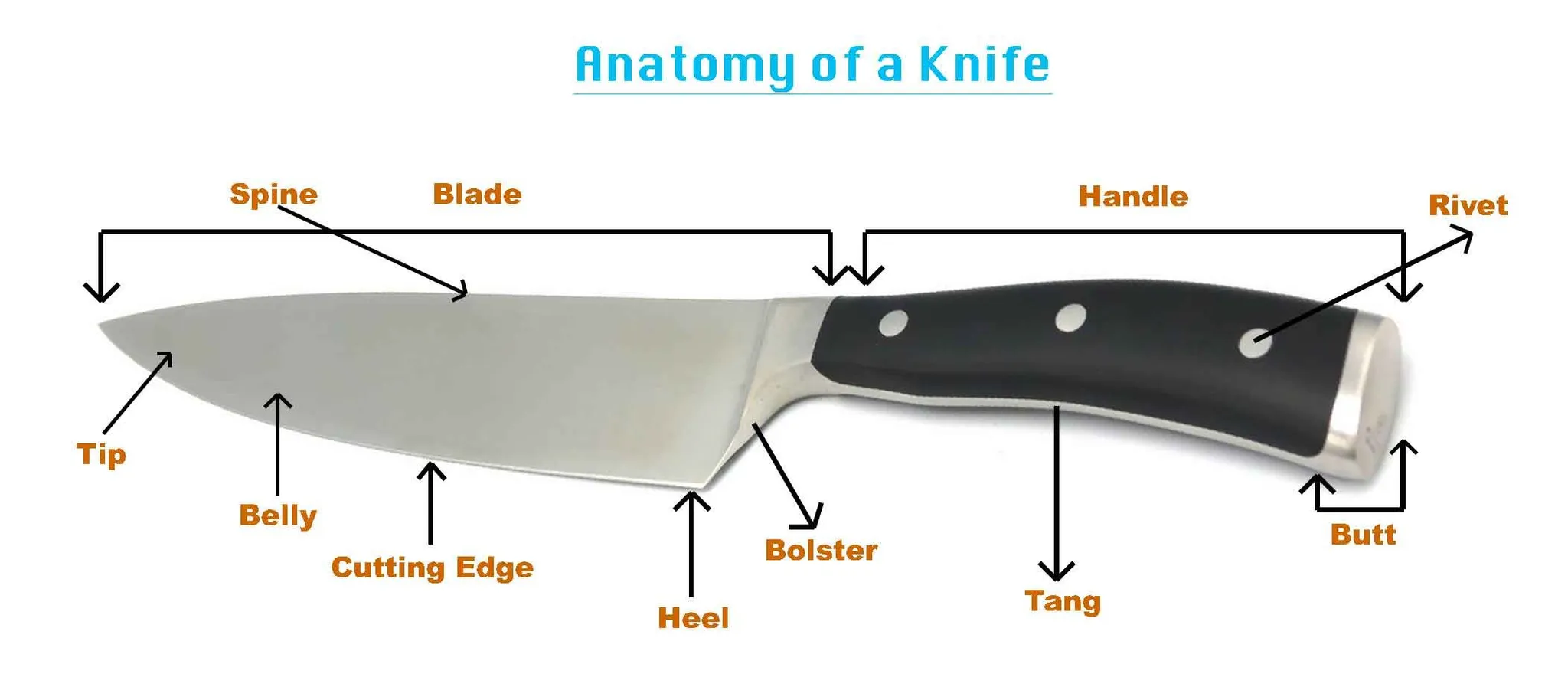
Parts of a Knife Anatomy of a Chef’s Best Friend
Chef's knives are measured in inches, and lengths of 8" to 12" are common. A longer blade lets you make longer single-stroke cuts when slicing. The so-called "German" style of chef's knife tends to have a more curved section at the front of the blade, good for chopping in an up-and-down "rocking" motion. The "French" style is straighter, and.
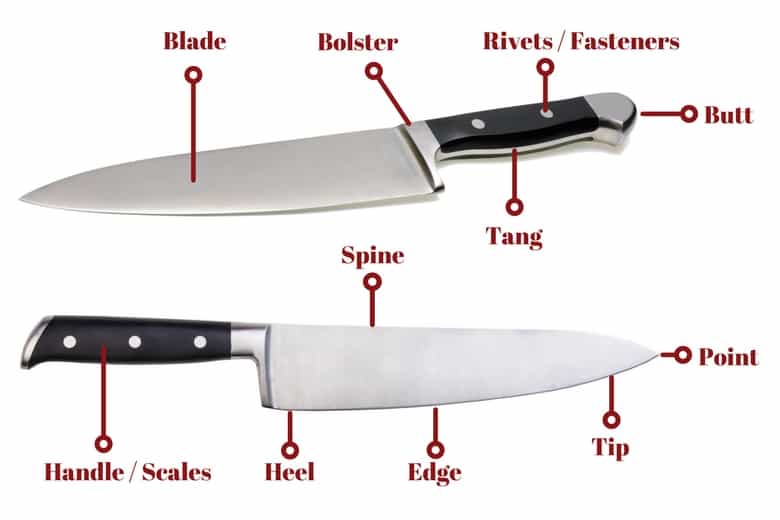
The Parts of a Knife — The Anatomy of Kitchen and BBQ Knives
Add the liquid and bring to a boil. Lower the heat to a slow simmer and cook for 2 hours, the lid of the pot just ajar. Set aside. Over medium-high heat in another large heavy-bottomed pot or Dutch oven, cook the onions, carrots and celery in 2 tablespoons olive oil, stirring, for 7 minutes.

Cuisinepro® iD3® Chefs Knife 20cm 8in THE CUSTOM CHEF TM
A chef's knife typically consists of a sharp, tapered blade ranging from 6 to 12 inches in length, a bolster (the thick junction between the blade and the handle for balance and safety), a heel (the widest part of the blade used for cutting tougher ingredients), a spine (the top, non-cutting edge of the blade), and a handle for grip and control.

How Are Chef's Knives Measured? Kitchenware Compare
Blade Grip, or Pinch Grip. The second grip--blade grip--is preferred for those who have some experience. The thumb and index finger are in front of the bolster directly on the blade, pinching it to help stabilize the knife while cutting. It may feel a little unfamiliar and awkward at first, but it's actually a pretty controlled grip.

The ultimate kitchen knife guide Features Jamie Oliver Knife
Do you correctly know how to hold a knife? Learn 4 effective gripping methods, the cutting motion technique, and guide hand positioning. Chef Jon-Paul Hutc.

Really nice recipes. Every hour. — Learn the proper way to hold a knife
You should be gripping the knife mainly with the thumb and forefinger. If you find that you're tightly clutching the entire handle of the knife, just relax and loosen your hold. With practice, you'll get used to this grip, and soon any other grip will feel unnatural to you. 02 of 03.

Chef Set Knife, Chef knife, Damascus steel chef knife
The Tang, Handle Scales, and Pins. Although some knife handles are made of one piece of injection molded plastic or are of solid metal, most kitchen knives have two-piece handles of stabilized wood, plastic, or other materials. Each piece of the handle is called a scale. The tang is the metal part of the knife extending from the blade to the butt.
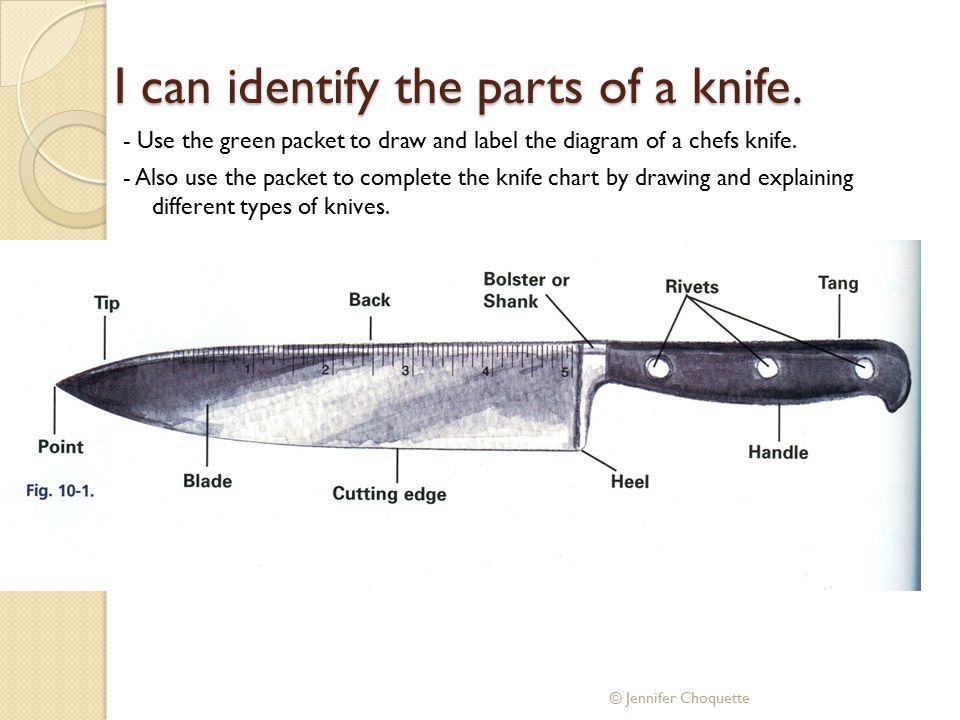
Knives Drawing at GetDrawings Free download
Week 1: Ready. Week 2: Set. You can have a great knife but if you don't hold it right, you've wasted your money (and time!) Having the right grip on your chef's knife may seem like the most basic thing but it makes a huge difference in how you control your knife, which in turn makes cutting easier and safer.

Chef’s Knife Set Hedley &
The right way to hold a knife can be easily summarized in one directive: choke up on it. To do this, identify the bolster of your knife—it's the ridge that separates the handle from the blade.
Kitchen Knives FAQ The Kitchen Knife Fora
The bolster is part of the blade, but it is somewhat thicker. The purpose of the bolster is to give added strength to the blade when it's under strain from heavy work. It also protects fingers from making contact with the heel of the blade. Furthermore, the added weight provides balance in a well-crafted knife.
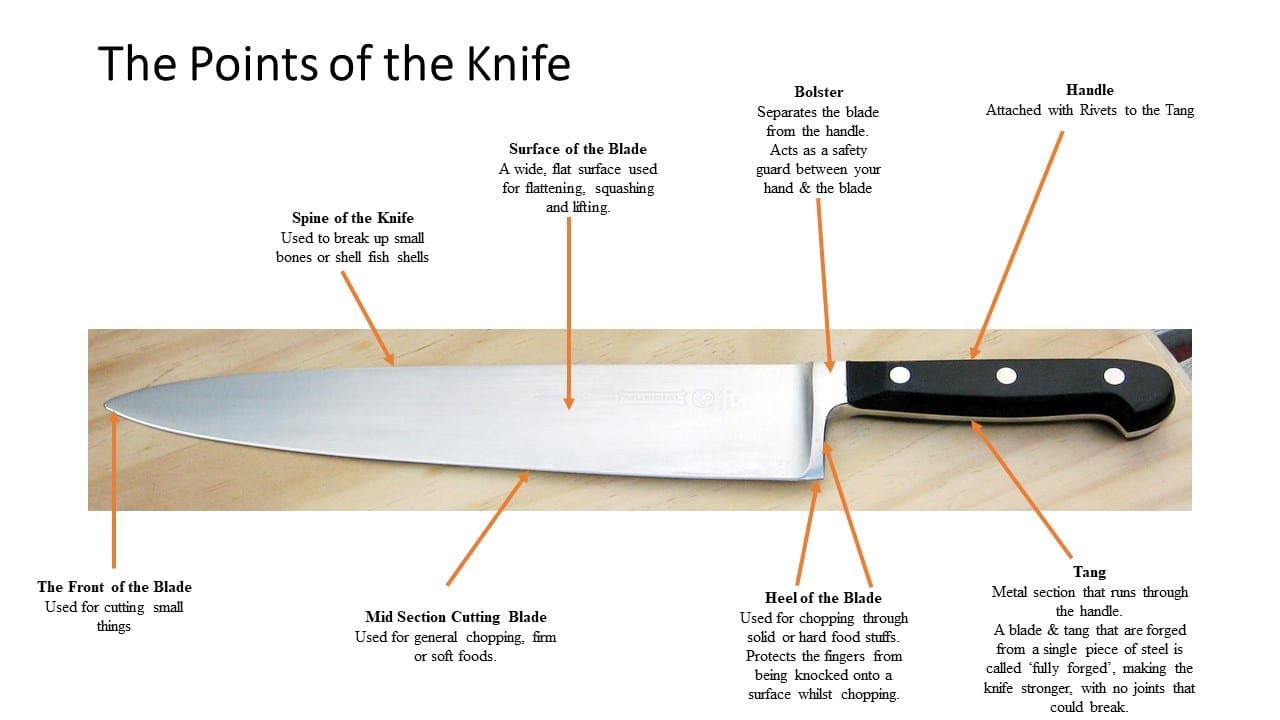
Ecourse Knife Skills Courses for Cooks
A chef's knife is a multipurpose tool. It's more like a Swiss Army knife than you might realize! Once you understand its various parts and their uses, you'll.

The Best Chef Knife You Can Buy Today My Fermented Foods Best chefs
1. The Anatomy of a Chef's Knife. Whether it costs $20 or $200, all chef's knives have the same basic parts and construction. From the point to the butt, take this comprehensive walk through the anatomy of a knife. (Image credit: Maria Siriano) 2.